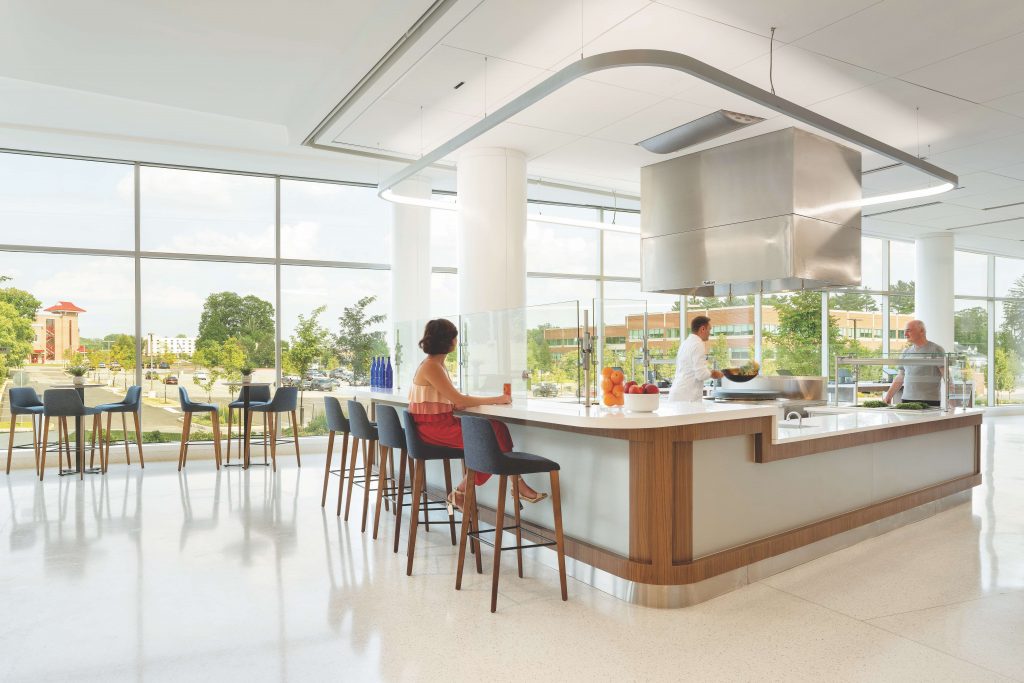
100 years ago the Bauhaus design school was founded in Germany in 1919. Despite the brief 14 years of its existence until 1933 when it closed, the Bauhaus design school continues to have a profound influence on the practice of design. Few of our young foodservice consultant designers will understand how much the Bauhaus has had an impact on the way in which we all practice and how its founding principles continue to be used to improve our practice even today.
While the curriculum varied over the few years of its existence, the Bauhaus basic approach was that art and industry are inexorably interconnected and combined training in the arts with functionality and the technical approach to design, materiality and manufacture as the foundation of all design.
This approach led to many of the classic furniture and building designs that remain today (Knoll furniture: the Barcelona Chair, sans serif fonts as well as buildings such as the IBM Plaza Chicago) and influenced the work of many of today’s architects and designers. In some cases through being taught by those who taught at the Bauhaus before having to flee; many of them to the United States. Marcel Bruer and Walter Gropius at Harvard; Mies van der Rohe at Illinois Institute of Technology as well as many less-known practitioners who left Germany to start new lives throughout the world.
A multi-disciplinary design
As designers, even though it may not seem immediately obvious, we can still gain much from the Bauhaus approach. But it is particularly with their approach to what we now describe as multi-disciplinary design that can be traced back to the Bauhaus philosophy of design. The mix of art, in our case the art of cooking, with functionality, materials and manufacture as well as management is the foundation of foodservice design consulting.
Architecture and interior design practices have moved to a studio format that brings together these multi-disciplinary project teams rather than individual designers working on each project. The team leader will have experience across all parts of the project complexities so as to be able to lead the team.
The design of foodservice facilities can be the most complex of all the parts that go to make up the complete project because of the wide range of functions, materials and manufacture that make up the commercial kitchen. For a designer starting out in the foodservice industry to make their way through to lead consultant on projects, an understanding and some experience and even interest in all the parts that make up the whole will be essential.
While a site or factory visit can be a useful introduction, to be really effective, the young designer needs to immerse themselves in each of these technical aspects. Spend time working in the factory, kitchen, architects office, engineer’s office and even on site so as to absorb the way in which each works to build the whole. This would apply equally to the young designers in the manufacture of equipment. Experience the foodservice design office, the kitchen, the consulting engineer and in both cases today the IT and digital industry becomes an essential path to success.
In many cases the designer will start in the foodservice industry with a particular experience or qualification. This foundation will then be balanced through becoming familiar with the others and then adding specialist areas of ergonomics, occupational safety food safety, codes and regulations, as well as business practice the designer becomes a consultant.
Depth of understanding
It is through this level and depth of understanding across disciplines that the global contribution of the professional foodservice consultant maintains a unique and valuable though often not recognised partnership with both the construction and the foodservice industries. The development and maintenance of these capabilities is essential for the development of a wider recognition of FCSI as professional service organisation in the same way as architecture, accounting and engineering professional organisations.
‘Sharing, supporting and inspiring’ has been an eminently successful ambition between members, but to progress and deliver real value to the membership we need to project FCSI professionalism beyond the Society and those who regularly connect and work with members to governments and industry as a whole where the understanding of our profession is generally sparsely understood, if at all.
We have a great story to tell about a truly multi-disciplinary profession that is nothing like any other through the combination of design and management advisory services (MAS) – and we need to spend more time telling the world about it.
Tim Smallwood FFCSI




